Overview
Successful marketplace creation hinges on several essential steps:
- Defining your niche and audience
- Validating your marketplace idea
- Selecting the right business model
- Developing a Minimum Viable Product (MVP)
- Implementing effective marketing strategies
Each of these steps is underpinned by thorough research and expert insights, which highlight the critical importance of:
- Understanding market demands
- Testing concepts with potential users
- Choosing a sustainable business model
- Concentrating on core features for initial launches
- Employing comprehensive marketing tactics to engage your target audience.
Introduction
Creating a successful online marketplace is no small feat; however, the potential rewards are immense for those who navigate the complexities effectively. With the retail platform sector projected to generate over $7.39 trillion in revenue by 2025, understanding the essential steps for marketplace creation is crucial for aspiring entrepreneurs.
How can one ensure their marketplace stands out in a crowded digital landscape, meets the needs of a specific audience, and ultimately thrives? This article delves into five vital steps that will guide entrepreneurs from defining their niche to implementing effective marketing strategies, providing a comprehensive roadmap for success in this dynamic industry.
Define Your Niche and Audience
To establish a successful platform, it is essential to begin by defining your niche. This process involves pinpointing a that is underserved or possesses unique needs. Conducting comprehensive market research is vital to grasp the demographics, preferences, and pain points of your target audience. Employing tools such as surveys, focus groups, and social media analytics can yield valuable insights. For instance, if your focus is on fitness enthusiasts, investigate the specific services or products they desire that are currently lacking in the market. This clarity will not only guide the development of your platform but also influence your marketing strategies, ensuring you attract the right users from the very beginning.
Experts highlight that comprehending neglected segments is essential for achieving success in the market. In 2025, it is projected that 71% of market researchers will rely on AI-generated insights to identify these segments effectively, highlighting the growing reliance on technology in market research. Anchal Chhabra, Co-CEO of Factworks, notes that research buyers increasingly seek clear answers regarding target segments and their potential value. Furthermore, 80% of consumers are more likely to engage with brands that offer personalized experiences, underscoring the importance of tailoring your offerings to meet specific needs. Successful examples of niche identification include platforms that cater exclusively to eco-friendly products or specialized fitness services, demonstrating the potential for growth in targeted markets. By concentrating on these neglected regions, you can align your platform for success and foster significant engagement.
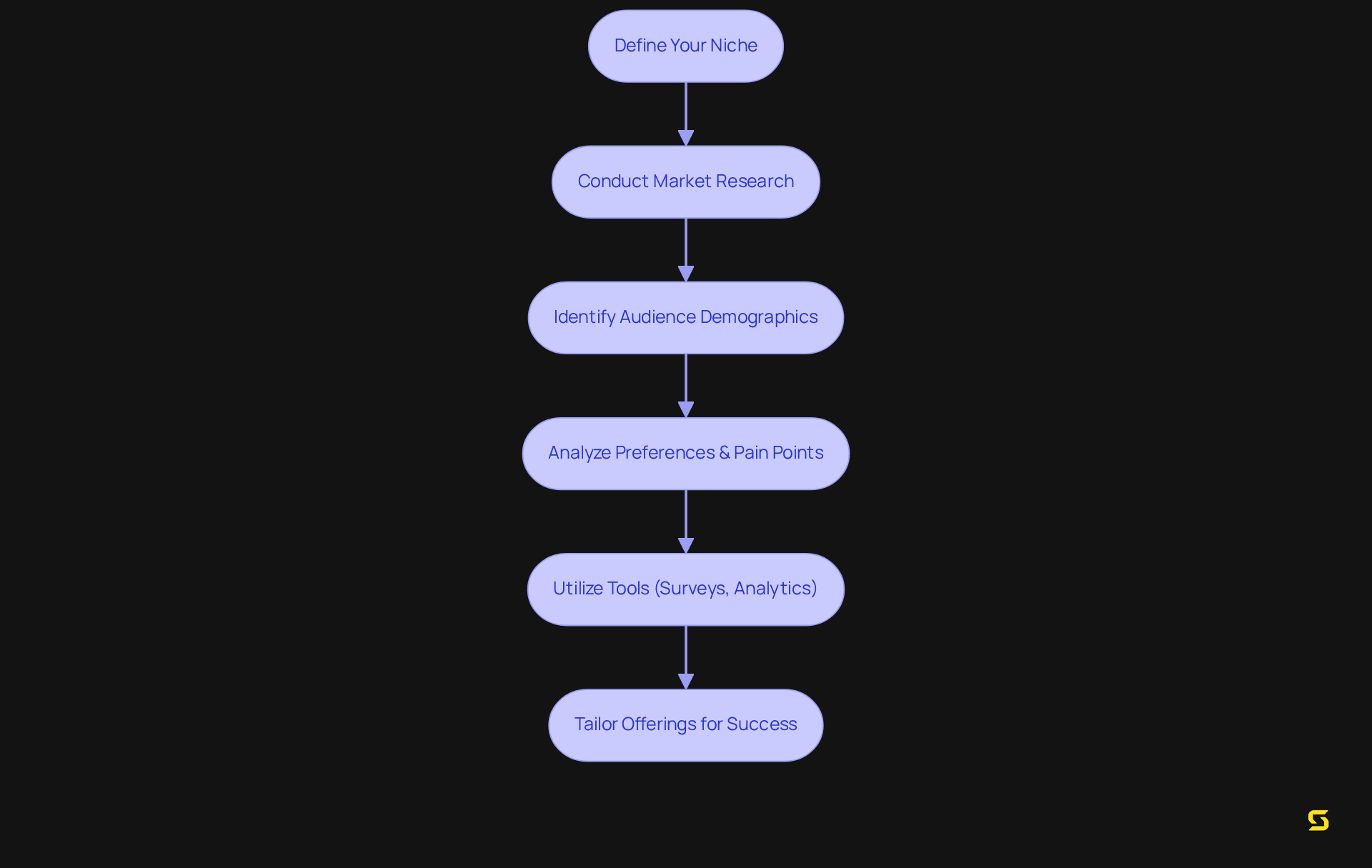
Validate Your Marketplace Idea
Once you have defined your niche, the next critical step is to validate your business concept. This can be achieved through various methods, such as:
- Creating three landing pages to gauge interest
- Conducting interviews with potential users
For instance, if your marketplace emphasizes eco-friendly offerings, you might conduct a survey to evaluate consumer interest in specific items. Notably, a recent survey revealed that 78% of consumers regard sustainability as important, while 62% actively search for sustainable options, underscoring the increasing market potential for eco-friendly offerings.
Furthermore, consider developing a minimum viable version (MVP) to test the waters. This approach allows you to gather feedback and make necessary adjustments before a full-scale launch. Engaging with early adopters can provide invaluable insights that shape your final offering.
It is also crucial to analyze conversion rates to determine the viability of your product idea; low conversion rates may indicate the need to reposition your product. Successful , such as those used by startups like Buffer, demonstrate the effectiveness of this approach in attracting interest and driving engagement.
By leveraging these strategies, you can ensure your platform aligns with consumer values and preferences, ultimately enhancing your chances of success.
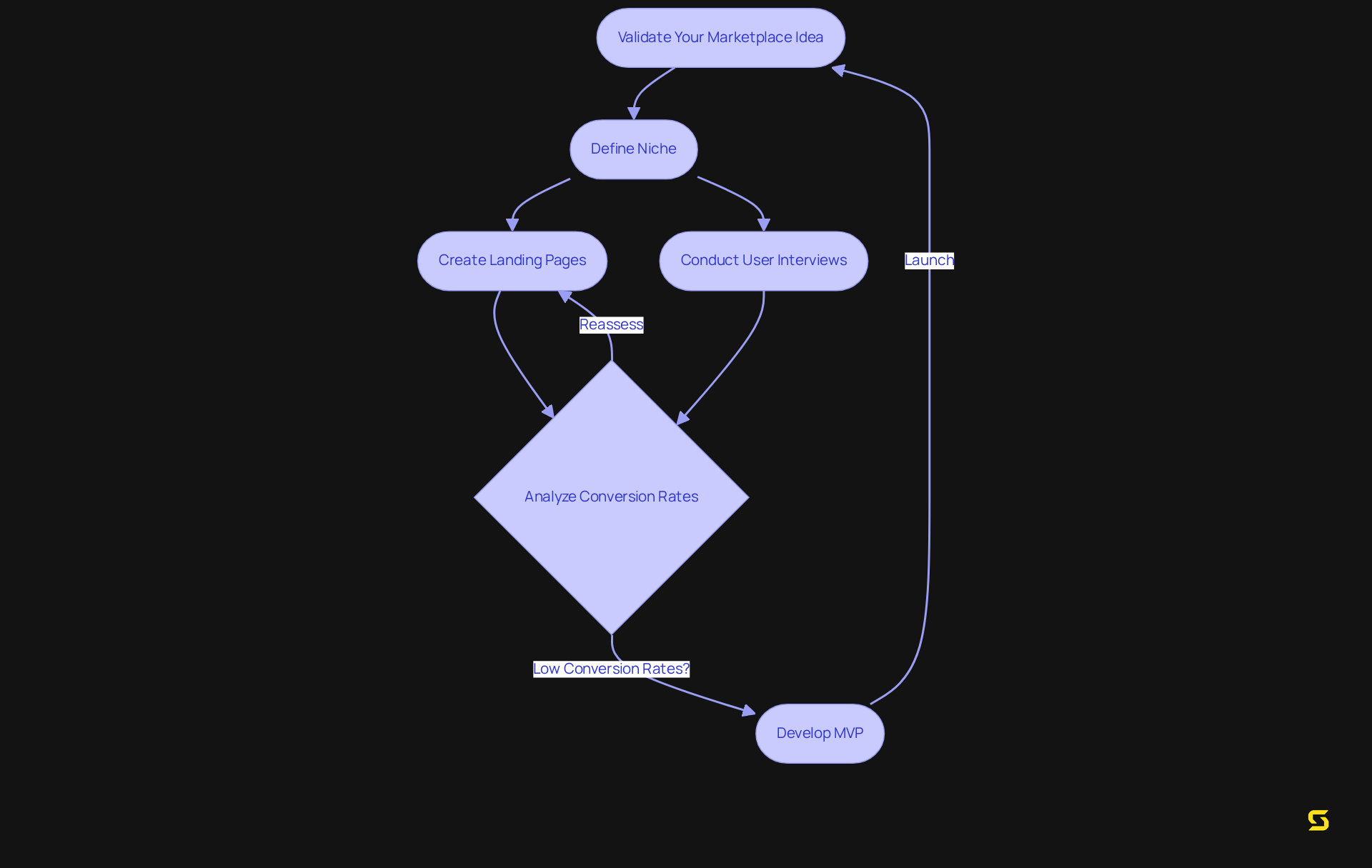
Choose the Right Marketplace Business Model
Selecting the appropriate business model for your marketplace creation is an essential decision that can significantly impact your success. Common models, such as commission-based, subscription, and freemium structures, each provide unique advantages for marketplace creation. For instance, if you are developing a platform for freelance services, a commission-based model may prove most effective, allowing you to take a percentage of each transaction. Alternatively, a subscription model could yield steady revenue if your platform provides premium features. It is crucial to analyze competitors and assess which model for marketplace creation aligns best with your value proposition and user expectations. This strategic choice will influence your and overall sustainability in the context of marketplace creation.
The retail platform sector is projected to generate over $7.39 trillion in revenue by 2025, underscoring the substantial profitability potential of these models. Additionally, the lead fee model, as exemplified by Thumbtack, presents operational challenges that must be carefully considered when transitioning from a commission-based approach. Emerging trends, such as social commerce integration and AI-driven personalization, are also reshaping marketplace creation for business models.
Experts strongly recommend starting with a single, sustainable model that aligns with your business's value proposition. As James Virgo, Co-Founder of Dittofi, asserts, "Mixed commerce models are regarded as the 'holy grail' because they allow platforms to scale profitably." This tactical approach not only influences your pricing plan but also ensures the long-term viability of your platform.
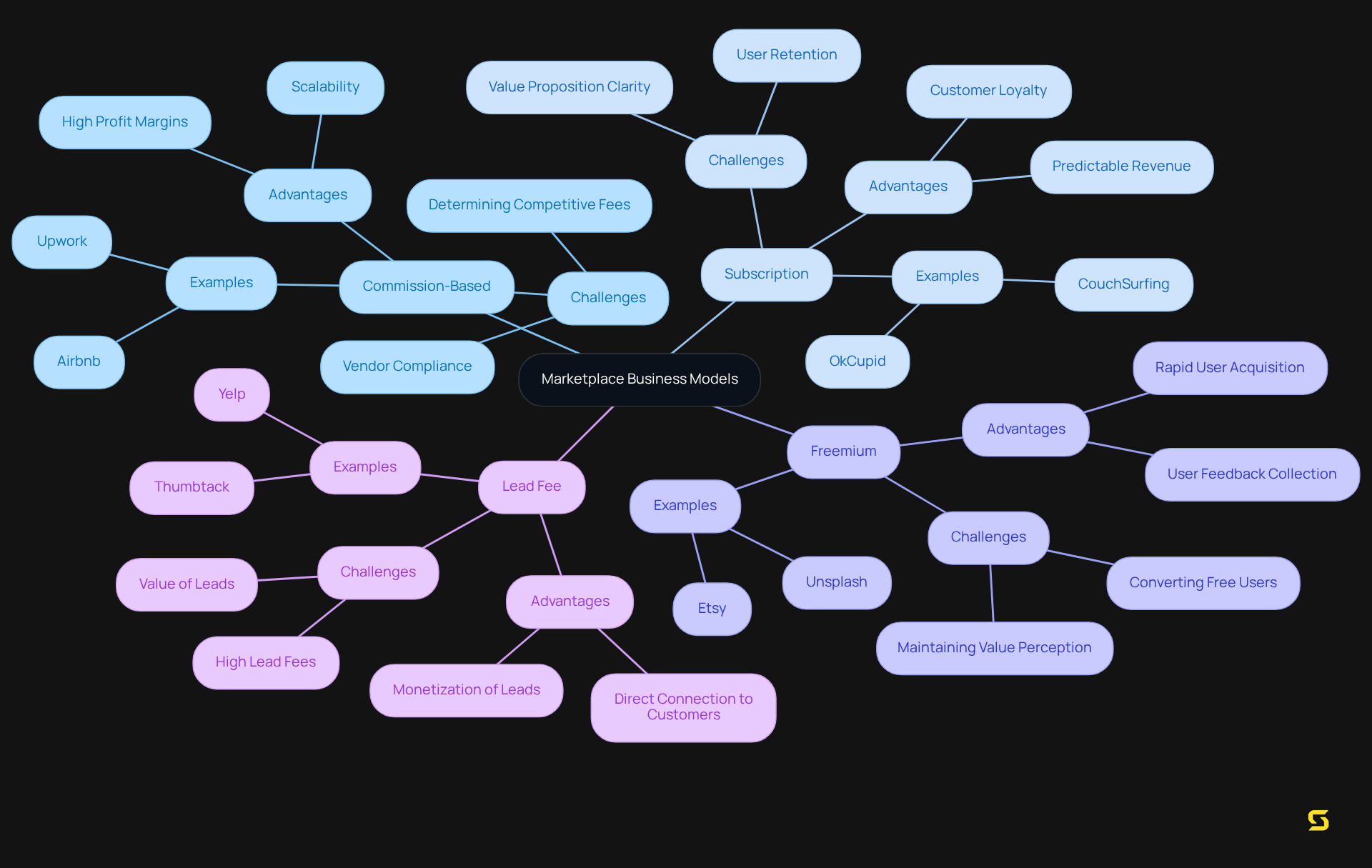
Develop Your Marketplace MVP
Creating a Minimum Viable Product (MVP) is an essential approach for effectively launching your platform. By focusing on executing the core features that meet the primary needs of your clients, you set the stage for success. For example, if your platform connects purchasers and vendors of handmade items, your MVP must include critical elements such as:
- User registration
- Product listings
- A secure payment system
Statistics reveal that platforms with streamlined registration processes enjoy significantly higher engagement rates. Research indicates that startups employing an MVP strategy achieve a 60% higher success rate compared to those introducing fully-equipped offerings. Furthermore, comprehensive product listings enhance consumer trust and satisfaction, which are vital for platform success.
After launching, actively seeking feedback from participants is crucial for identifying areas for improvement. This allows for swift adjustments and ensures that your marketplace evolves in alignment with client expectations and market trends. Successful MVPs, such as MadPaws, which began as a simple platform connecting pet sitters with pet owners, exemplify the power of focusing on fundamental features and refining them based on user feedback. Notably, MadPaws secured $5 million in Series A funding following its MVP launch, illustrating the potential success that follows a well-executed MVP strategy. By prioritizing these elements and employing feature prioritization models like the MoSCoW Method or the Impact-Effort Matrix, you can establish a robust foundation for your platform that fosters growth and cultivates user loyalty.
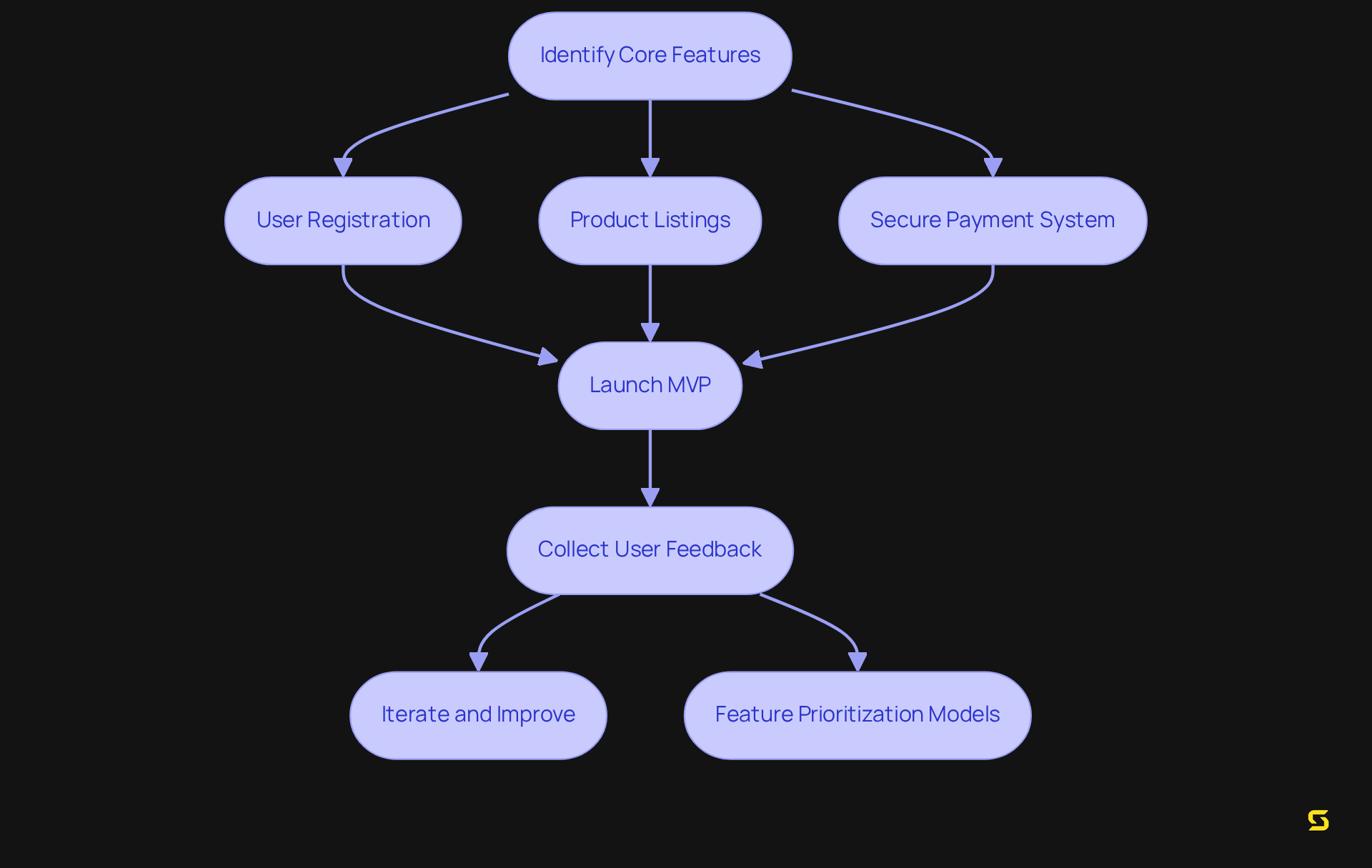
Implement Effective Marketing Strategies
To effectively promote your marketplace creation, it is imperative to create a comprehensive marketing plan that encompasses:
- Digital marketing
- Social media interaction
- Content creation
Begin by utilizing SEO techniques to enhance visibility in search engines, and consider running targeted ads to reach specific demographics. Identifying key performance indicators (KPIs) early in your marketing plan is essential for measuring goals related to:
- Finances
- Customer satisfaction
- Organic traffic
Collaborating with influencers in your niche is crucial for expanding your reach and credibility; indeed, 80% of marketers affirm that influencer marketing is a highly effective strategy. For instance, if your platform emphasizes sustainable products, partnering with eco-conscious influencers can significantly promote your service.
Additionally, it is vital to create valuable content that addresses the interests and needs of your audience, positioning your marketplace as a trusted resource. Don't overlook the necessity of optimizing for voice search, as this is increasingly important due to the rise of voice assistants.
Moreover, developing comprehensive customer personas can assist you in gaining a deeper understanding of your target audience, allowing you to customize your marketing approaches accordingly. This multifaceted strategy for marketplace creation will not only help drive traffic but also foster user engagement while avoiding common pitfalls in marketing strategies.
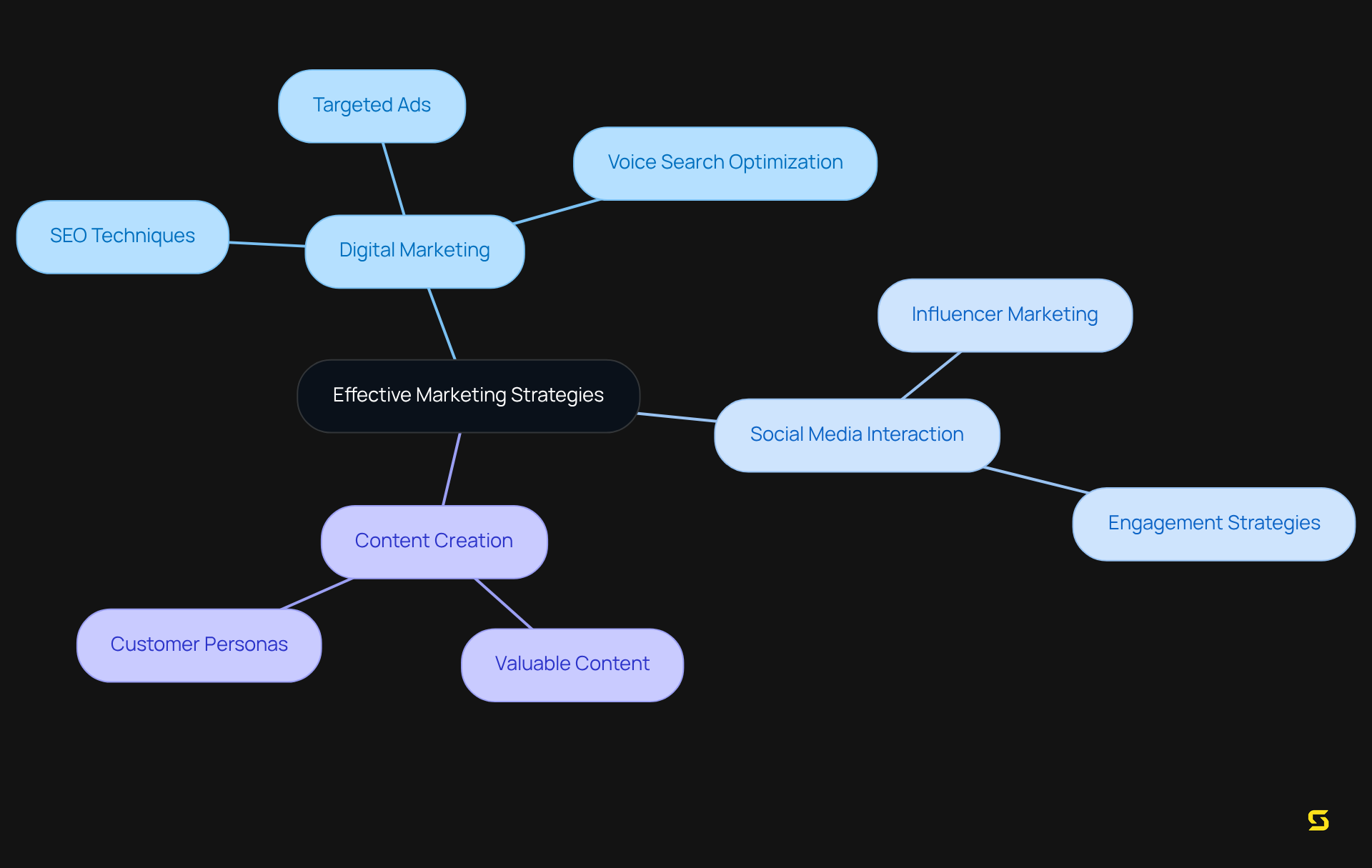
Conclusion
Establishing a successful online marketplace is predicated on a strategic approach that encompasses several essential steps. By:
- Defining a clear niche and understanding the target audience
- Validating the marketplace idea
- Selecting the right business model
- Developing a Minimum Viable Product (MVP)
- Implementing effective marketing strategies
Entrepreneurs can craft platforms that resonate with users and thrive in competitive environments.
Thorough market research is paramount; it identifies underserved segments and underscores the necessity of testing ideas through MVPs. Furthermore, selecting a business model that aligns with user expectations and market trends is crucial. Each step builds upon the last, creating a cohesive framework that not only enhances the chances of success but also fosters user engagement and satisfaction.
Ultimately, the journey of marketplace creation transcends merely launching a platform; it involves continuously adapting to meet the evolving needs of users. By embracing these practices, aspiring marketplace creators position themselves for long-term success and make meaningful contributions to their chosen markets. Now is the time to take action, refine your ideas, and embark on the rewarding path of marketplace development.
Frequently Asked Questions
What is the first step in establishing a successful platform?
The first step is to define your niche, which involves identifying a specific segment of the market that is underserved or has unique needs.
How can I conduct market research to understand my target audience?
You can conduct market research by using tools such as surveys, focus groups, and social media analytics to gather insights about the demographics, preferences, and pain points of your target audience.
Why is it important to understand neglected market segments?
Understanding neglected segments is essential for success in the market, as it helps tailor your offerings to meet specific needs, which can attract the right users and enhance engagement.
What role does technology play in identifying market segments?
Technology, particularly AI-generated insights, is increasingly relied upon by market researchers to effectively identify neglected segments, with projections indicating that 71% will use such insights by 2025.
How can I validate my marketplace idea after defining my niche?
You can validate your marketplace idea by creating landing pages to gauge interest, conducting interviews with potential users, and developing a minimum viable product (MVP) to gather feedback.
What are some effective methods to test consumer interest in a niche market?
Effective methods include conducting surveys to evaluate consumer interest in specific items, such as eco-friendly products, and analyzing conversion rates to assess the viability of your product idea.
What is the significance of consumer engagement with personalized experiences?
A significant 80% of consumers are more likely to engage with brands that offer personalized experiences, highlighting the importance of tailoring your offerings to meet specific needs.
Can you provide an example of successful niche identification?
Successful examples include platforms that cater exclusively to eco-friendly products or specialized fitness services, demonstrating the potential for growth in targeted markets.





